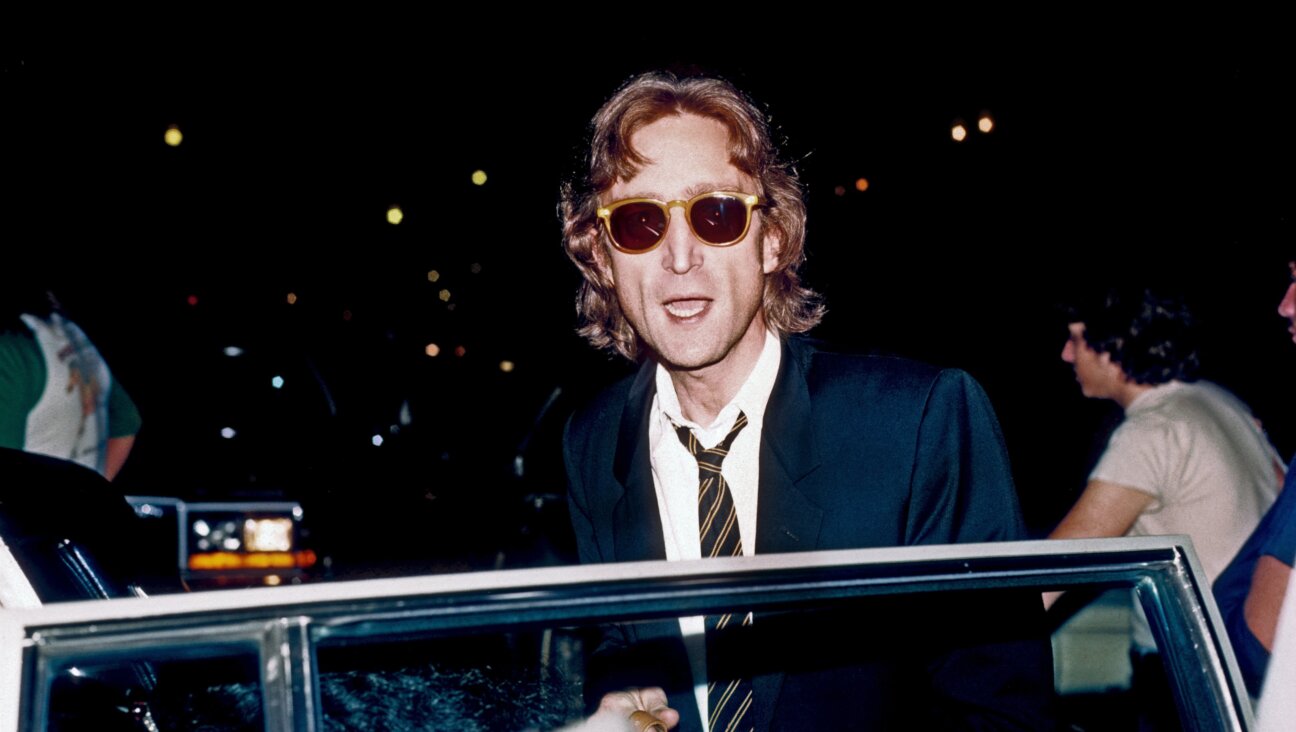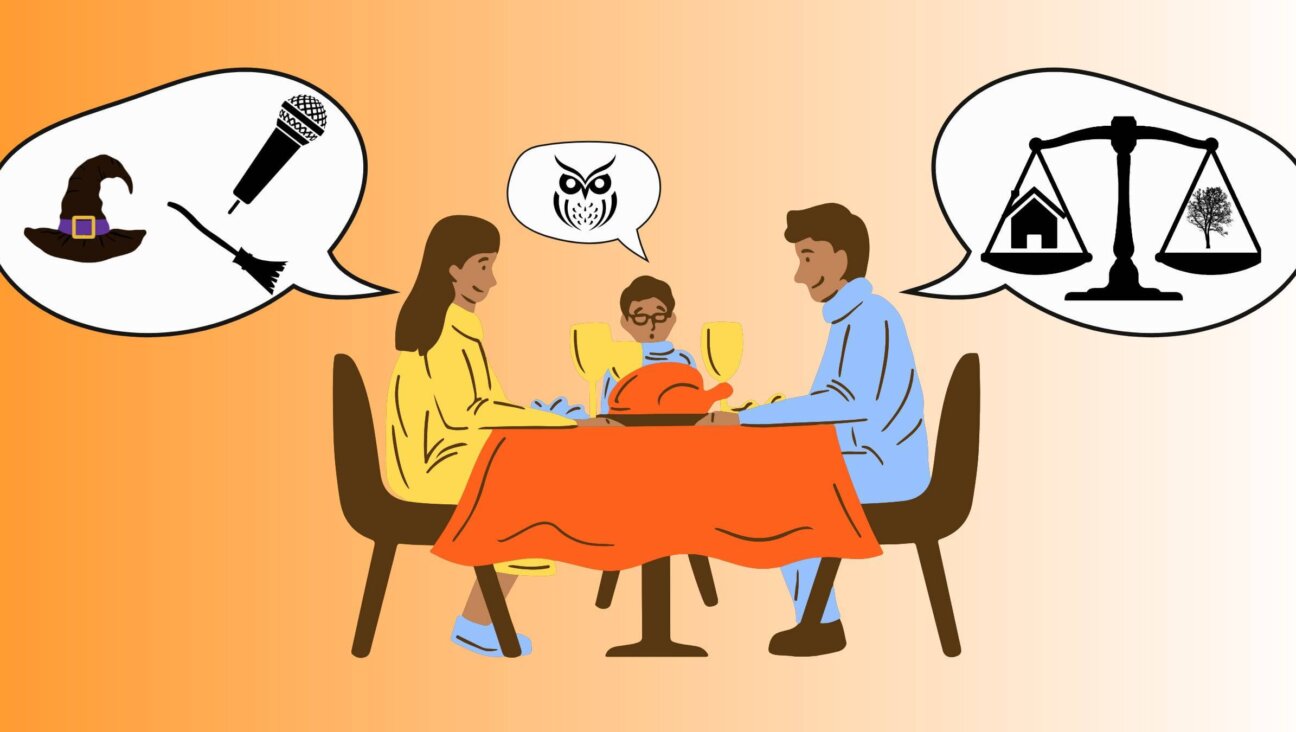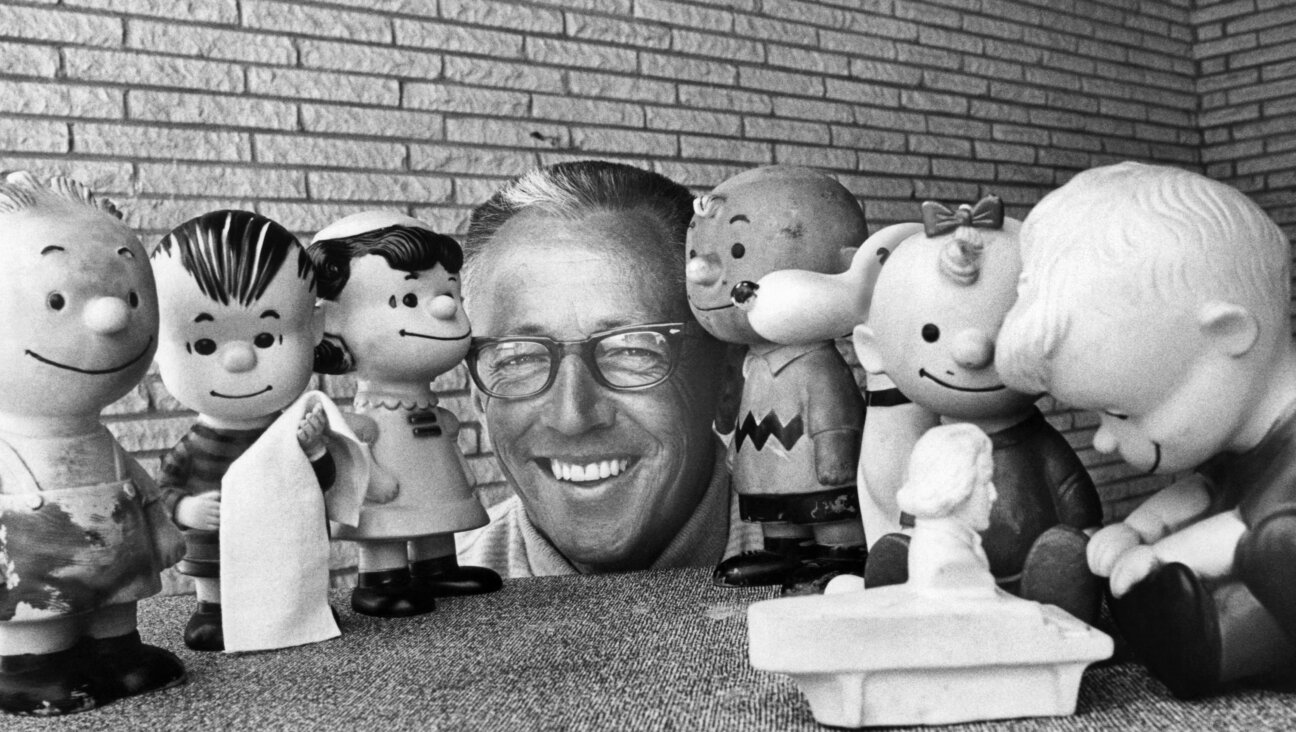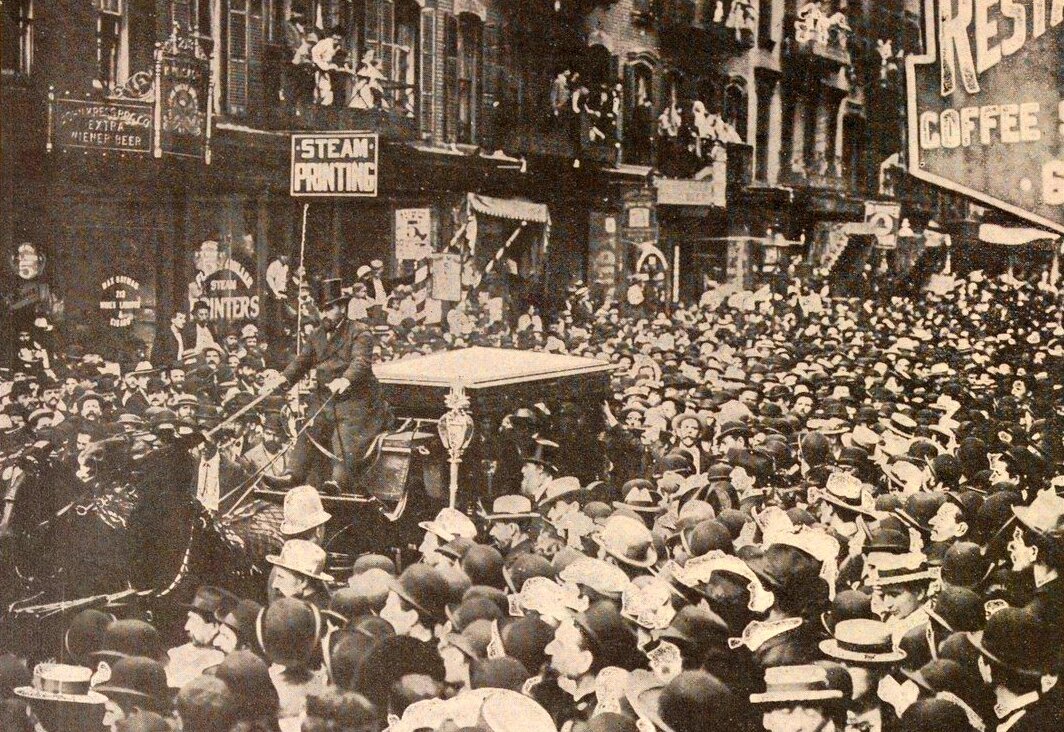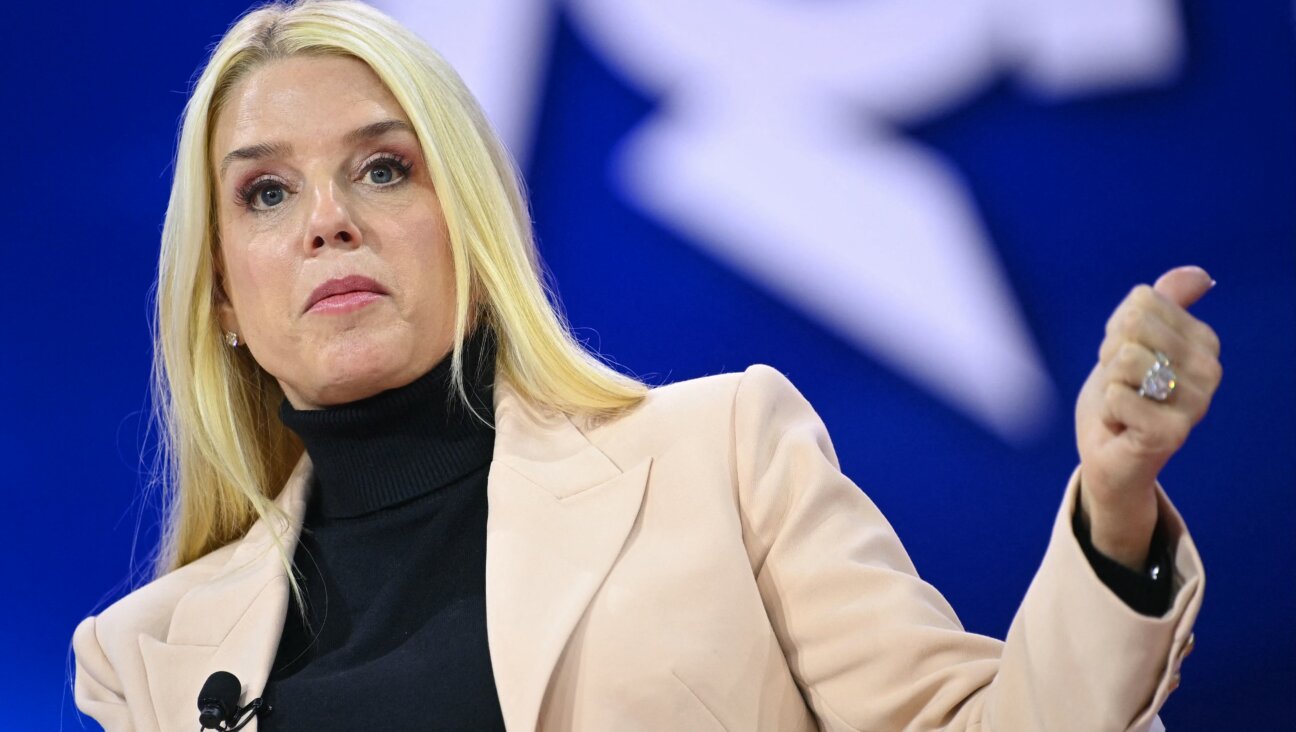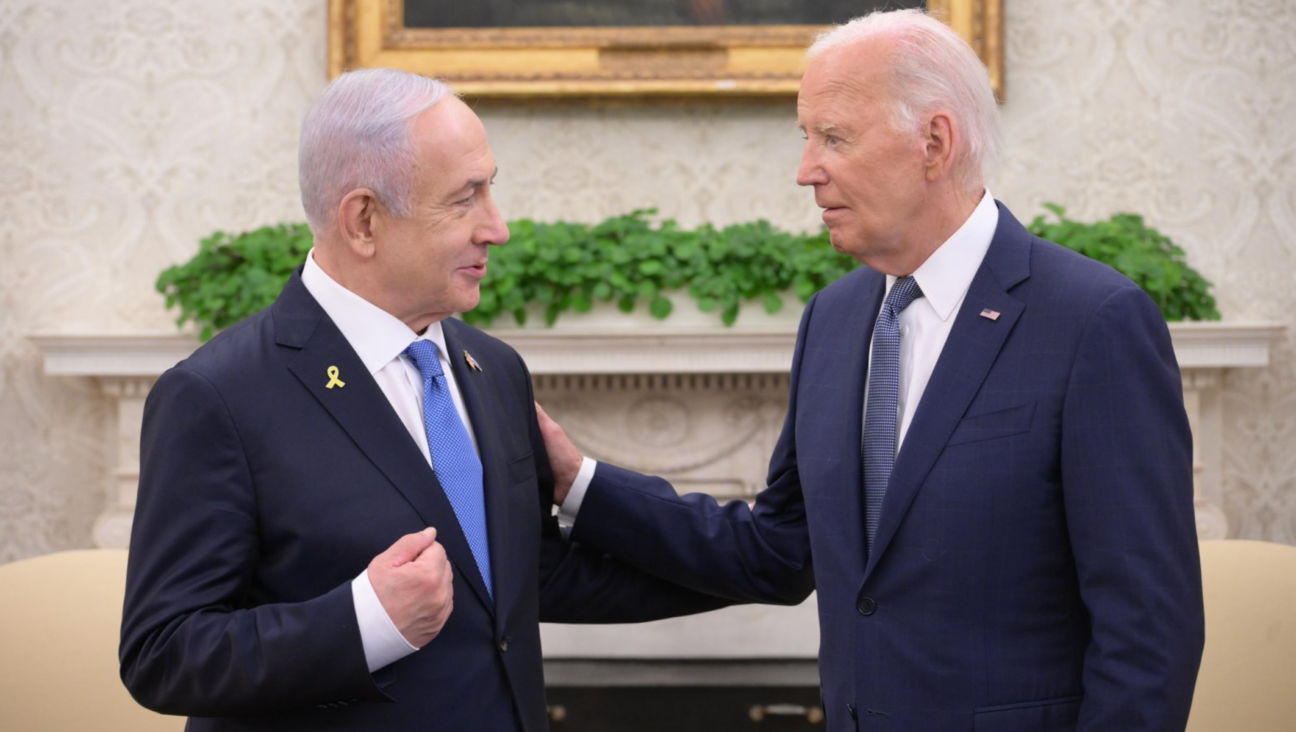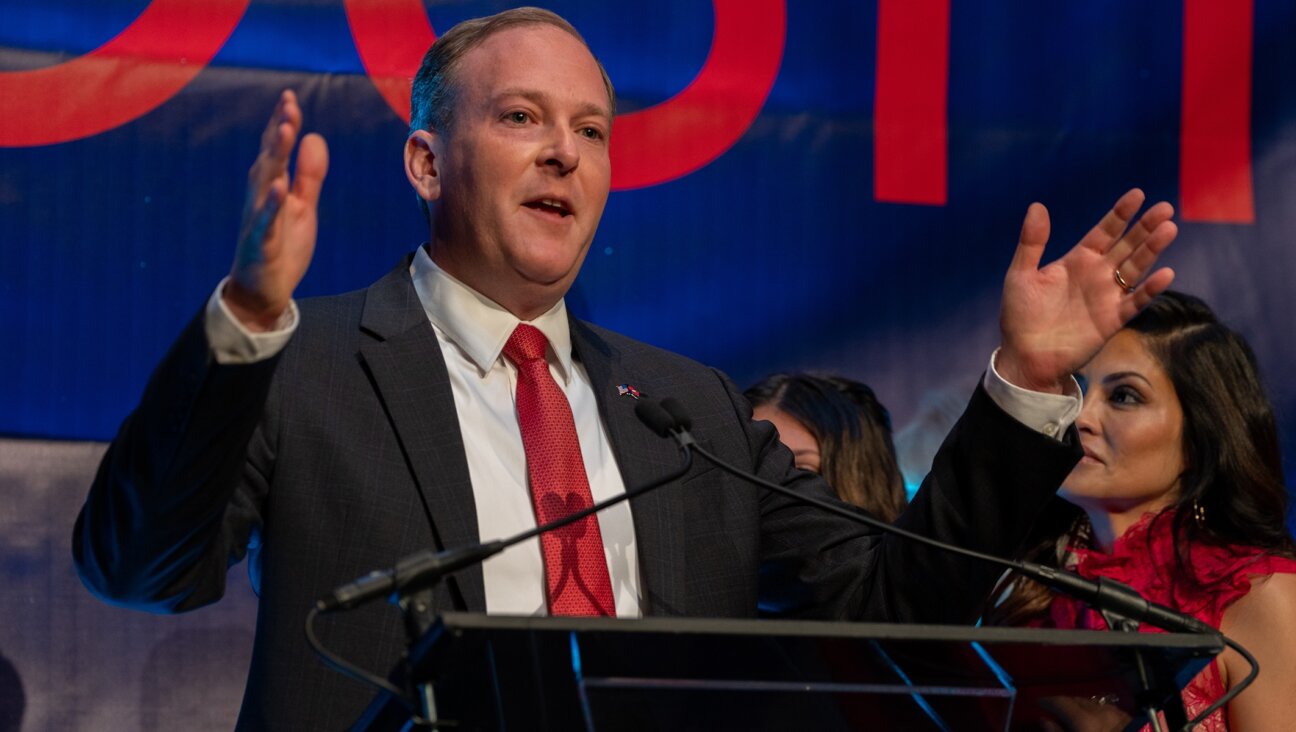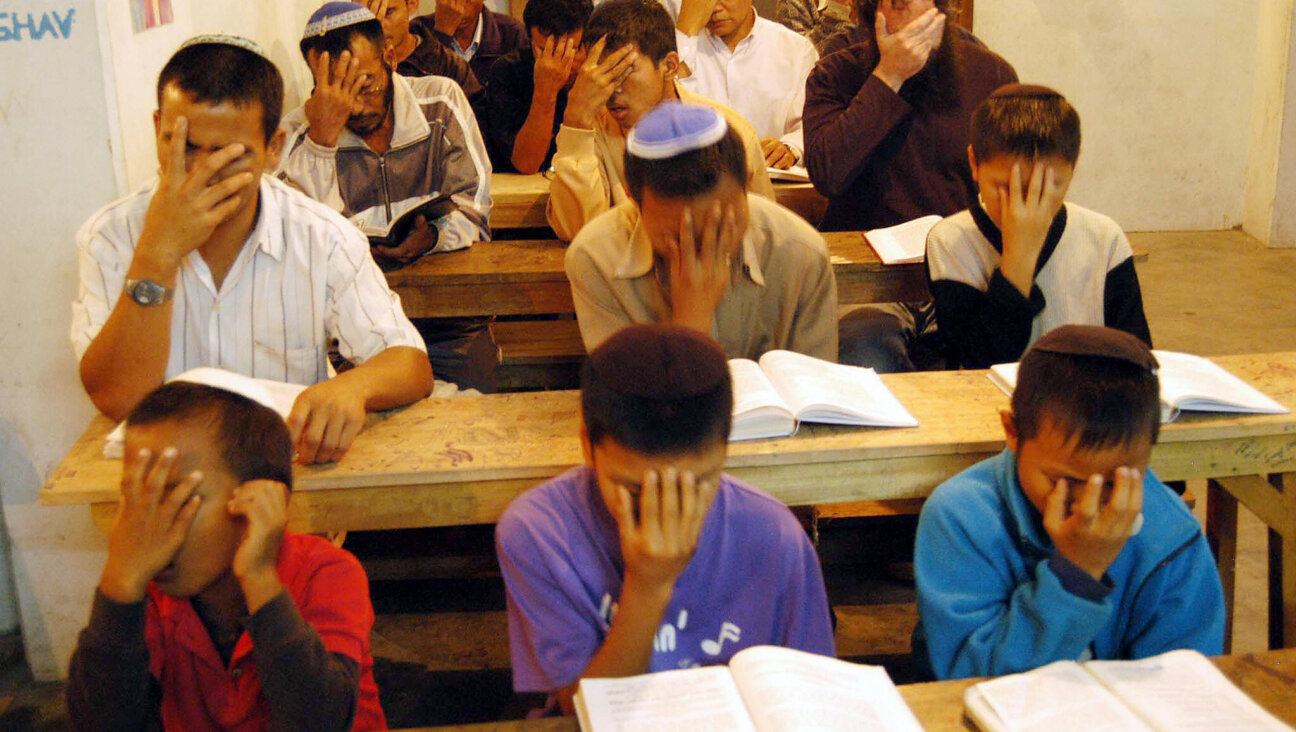Black Jews, he says, ‘get traumatized twice.’ To cope, he painted their experience.

MaNishtana
Editor’s note: In observance of Martin Luther King Jr. Day, the Forward is resurfacing some of our recent coverage related to the Black-Jewish experience and racial justice. This article originally appeared in June, 2020.
“I am tired of talking,” said MaNishtana, the writer, Orthodox rabbi and artist behind two striking images that capture the Black Jewish experience at this moment. “I’m tired of having the same conversations, listening to the same apologetics, listening to the same skewed statistics.”
The continued trend of systemic racism — most recently embodied by the deaths of George Floyd and Breonna Taylor at the hands of police — left him “frustrated and tired.” And the violence filtering through national protests over those deaths only exacerbated things.

MaNishtana
So last Sunday night, he opened Photoshop and made the first half of a diptych, an image he said many are calling the “superhero piece.” On closer inspection, that’s not quite right. The figure in tefillin giving the black power salute is not, in fact, cloaked in a cape, but rather a tallit that resembles David Hammons’ African-American Flag. But, if you zoom in, MaNishtana said, the stars are actually Magen Davids.
Some good ol’ art therapy. Much love. #iseeyouall pic.twitter.com/h0S9bNBnIh
— (((Ma Nishtana))) (@MaNishtana) June 2, 2020
The figure stands on an elevated platform, a sea of fire at his feet. Behind him are gray, blocky spires: They have the vague shape of skyscrapers but, in their geometric clustering and windowless form, might also stand in for the brick barricades erected by police. The backdrop is a field that resembles the American flag, with a tattered patch of blue in the top left corner and a sea of red interrupted by white hands firing pistols, leaving trails that mimic the flag’s trademark white stripes. The message is clear: The figure is trapped.
“There’s no real safe space,” MaNishthana, whose non-pseudonymous name is Shais Rishon, said. “We’re just there in the middle trying to live as both Jews and as African Americans in this country.”
That lived experience, as well as recent conversations surrounding the protests on Jewish Facebook groups, prompted MaNishtana’s second piece in the series: An image of a figure in a tallit and Klan hood standing before a wall of racist text.
It’s a jarring piece of art that many have found provocative, with some critics labeling it anti-Semitic and others calling it a powerful and necessary work in addressing Jewish racism.
The image is certainly striking and can be painful to look at. The figure’s tallit ends with nooses rather than fringe and is secured around his shoulders by a pair of handcuffs. Behind him, the comments speak of “black on black crime” and “thugs looting,” and state that Black Lives Matter is “Pro-BDS.”
Reading a lot of white Jewish commentary during this whole George Floyd/protestors situation rly makes a lot of you look like…And if you’re more upset at the visual than the words accompanying it, then you’re 1-part of the problem 2-probably also quoted here, too pic.twitter.com/ZYqayEKs7y
— (((Ma Nishtana))) (@MaNishtana) June 3, 2020
“All of those quotes there were spoken by Jews — most of them Orthodox Jews,” MaNishtana said. “Those are gleaned from Jewish Facebook groups I belong in, from statuses that I have written, statuses of friends of mine. None of them are coming out of thin air, and if you’re focusing on the piece itself as opposed to why the piece exists that’s part of the problem.”
MaNishtana says that some early responses to the piece by Jews questioned how the artwork might be used by anti-Semites to frame Jews as racist. One commentator, with the tag “the Wondering Israeli,” wrote “Louis Farrakhan approves your message.” MaNishtana thinks those concerns miss the point, and tweeted a “scathing non-apology” to all offended.
“If you are someone who espouses White Supremacist ideologies, you are a White Supremacist,” he told me. “It doesn’t matter whether you’re Jewish or not. And if you’re Jewish and you use Judaism or your Jewish experience to sort of justify those same talking points, then your tallit might as well be a Klan hood, because that’s what you’re using it for.”
MaNishtana believes it will take much more than the fury of the current moment to change the sorts of exchanges he culled from Jewish social media.
“The rhetoric that is in the background doesn’t just disappear. It’s not going to go away once these protests are over or once it’s died down. These are the reasons why Jews of color are stopped at synagogues across all denominations and asked why they’re there, how they’re Jewish, what’s their story.”
“For Jews of color: Any time there is something like this, whether there are anti-Semitic acts happening in Jewish communities, whether there’s police killing in African American communities, we get traumatized twice. There are anti-Semitic attacks: We’re a part of the Jewish community, so we’ve also gotten attacked. But if it’s somebody who’s African American, then there’s the racist rhetoric of ‘Oh, we did so much for Black people.’ ‘Oh, these savages.’”
Black Jews are put in a position of having to explain anti-Semitic violence, he said, and when police brutality occurs, they’re traumatized anew as a part of the African American community, only to hear racism from their fellow Jews.
In this current moment, MaNishtana said many are reaching out asking him what they can do to show support or how to broach the topics of systemic racism. He’s heard these questions before, and suggested people might go to Google to find their answers, going back to the not-so-distant year of 2014 and the Ferguson protests, when essentially the same conversation was being had. He’s happy to offer his insight, but Jews of color, he said, are not “unpaid interns.”
“Myself, my colleagues, other Jews of color: Our labor is not free,” said MaNishtana.
“We are very ready and willing to offer our services — ‘cause it is a service — and our services should be compensated. Otherwise, if you’re looking for us to just put you in the queue of the multiple people that we have messaging us across social media for free, that’s not going to happen.”
But the art is up for free, and speaks louder than words.
“It’s a lot harder for people to argue at a picture,” said MaNishtana. “Although bless their heart, it’s amusing to see them try.”
PJ Grisar is the Forward’s culture fellow. He can be reached at [email protected]
A message from our CEO & publisher Rachel Fishman Feddersen

I hope you appreciated this article. Before you go, I’d like to ask you to please support the Forward’s award-winning, nonprofit journalism during this critical time.
We’ve set a goal to raise $260,000 by December 31. That’s an ambitious goal, but one that will give us the resources we need to invest in the high quality news, opinion, analysis and cultural coverage that isn’t available anywhere else.
If you feel inspired to make an impact, now is the time to give something back. Join us as a member at your most generous level.
— Rachel Fishman Feddersen, Publisher and CEO








